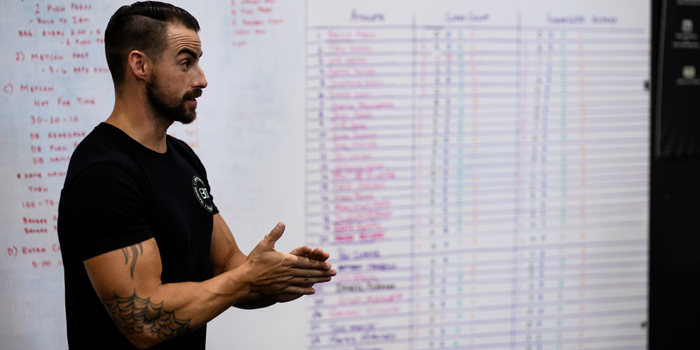
It’s common to hear athletes that regularly train at a box complain of back, shoulder, or knee pain, or of simply feeling run-down. These issues are not limited just to box programming – if you’re in the trenches training hard, you may be experiencing some of these symptoms, even if you don’t get your programming from a local box. Before I get into talking about the drawbacks of programming at most boxes, let’s first remember that box programming has been instrumental in getting a barbell into the hands of everyday folks.
I can remember my days of being a personal trainer at a commercial gym, where other trainers would often scoff at me when I was having my clients deadlift, box squat, and push press. Today, the “functional fitness” movement has swept the globe, but this revolution has some coaches ignoring other methods that may be just as important for their clients' health and longevity. It’s not uncommon to see coaches getting pigeonholed into thinking that there is only one way of doing things.
RECENT: Before the Pursuit of Excellence
For example, bodybuilders often shit on powerlifters, powerlifters often shit on Olympic lifters, and everyone shits on endurance and box athletes. The problem here is that the same folks that shit on other disciplines are simply not educated when it comes to the value of different training modalities. To be clear, there is something to be taken from all forms of training, whether you want to believe it or not. The overall result lends itself to feeling better, looking better, and hitting new personal records.
Below I’m going to delve into what I’ve seen over the last six years of owning a box, and the methods that we use now with gyms all over the world to ensure their clients don’t run into these issues, using a concurrent system of training with derivatives of the Conjugate System. Interestingly enough, the Conjugate System used at the legendary Westside Barbell is a concurrent system of training that utilizes multiple modalities to ensure progression, recovery, and the improvement of weak links. It is beneficial not only for strength athletes but also for every day, general-population athletes!
Lower Back Issues
The fundamental issue with most boxes is that most of them expose their clients to compound movements too soon. Additionally, most coaches prescribe inappropriate loading parameters for experienced and inexperienced clients. Teaching someone to move properly is one thing, but most trainees that sign up at a local box tend to be more anterior-chain dominant, and haven’t used their posterior chain since 1983. I’m not saying to not teach these athletes how to deadlift or squat – quite the contrary. Teach them how to move properly, but use single-joint movement so they can establish a mind-muscle connection with their glutes and hamstrings and, of course, strengthen their primary movers first.
The end result is people being able to actually use the musculature that was intended to be used when squatting and deadlifting. With athletes of all levels, I've found the below to be quite an effective solution for teaching and strengthening purposes:
The Solution
- Wide-Stance Goblet Box Squat: The purpose here is to teach people how to hip-hinge and engage their hips and hamstrings, as when we sit back on the box, we are forced to contract and explode through the concentric range of motion. Most will note that they can actually feel their hips and hamstrings working – that’s what we want.
- Single Limb Work: This goes without saying, but this work must be implemented and is even more necessary for athletes with lower training ages; you can’t build a house without a foundation.
- Sled Work: I’ve talked about this quite a bit, but you can’t go wrong with the sled. Why? Because there is no high level of skill required and the sled carries zero risk of injury, making it a necessary option for athletes of all levels.
- Core Work: Another non-negotiable, but implementing static holds like plank variations, as well as movements like deadbugs, encourages and teaches neutral posture and how to engage the anterior core. If your athlete can’t hold a side plank for ten seconds, should they really be deadlifting or squatting? Probably not.
Shoulder Issues
Aside from performing copious amounts of high-skill gymnastics work (which I wouldn’t recommend for the general population), there is a huge imbalance in most boxes: the balance between vertical pulling and horizontal pulling.
You’d be hard-pressed to find many boxes that regularly program row variations, but in reality, horizontal rowing should take precedence over vertical pulling. Of course, we aren’t debating the value of the pull-up; what we are considering is the lack of development of the lats, rear deltoids, and rhomboids of most people, and not being able to stabilize when performing dynamic movements. The solution here is pretty straightforward, through which we can implement change without having to drastically modify programming.
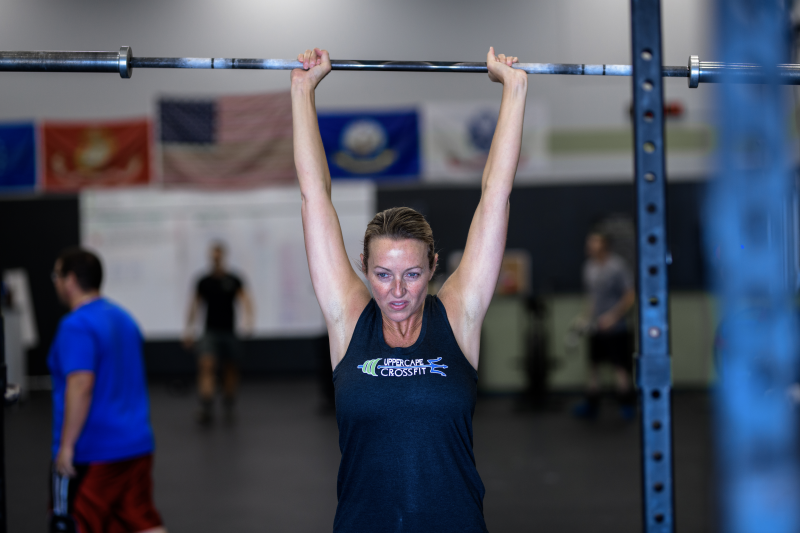
The Solution
- Horizontal Rowing: Replace some of your vertical pulling with horizontal rowing. There is a long list of row variations that can be done with a barbell, dumbbells, and kettlebells, so use all of them at your disposal. We include horizontal row work at least two times a week in our Affiliate Programming in relatively high doses.
- Band Work: An easy way to offset pressing and vertical pulling volume is to include high-volume band work. A standard rule of thumb that I learned from Dr. Rusin is that horizontal rowing should equate to 3:1 of pressing volume, and 2:1 horizontal rowing versus vertical pulling. This can easily be accomplished with high-volume banded pull-aparts and banded face-pulls. We recommend 100 reps of each, twice per week.
- More Dumbbell Variations: A lot of times, people can’t get their heads around scaling a movement. If you’re having issues, then scaling should be your friend. For instance, many trainees that complain of front deltoid pain can exacerbate it through barbell work with a pronated grip, such as the bench press or shoulder press. An alternative is to use dumbbells with a neutral grip, taking the stress off the front deltoid and allowing people to use the musculature of their triceps as a primary mover. Many find that they can comfortably press with dumbbells using a neutral grip and don’t incur the same discomfort.
If a movement is causing you pain, then that movement will have little value for you at that moment in time. And if you don’t train smarter, you’ll always be “broken”.
Now that we've talked about some classic issues that we see with group programming and issues that can arise in terms of the shoulder and back, let's delve into the last two scenarios that are common in group box classes: knee issues and burnout.
Knee Issues
Box athletes love to squat. Many do so multiple times a week, alternating between front squat, back squat, and overhead squat. This theory of squatting heavy every day is probably one of the dumbest things I've ever heard. If your goal is to be injured and broken, then go for it, but if your goal is to get stronger, you’ll need a better plan. The reason why athletes’ knees act up with so much squatting is due to joint angle. All of those variations that I listed place a great deal of stress on the patella tendon and can contribute to knee issues. If you’re in the camp of squatting daily, then you probably know what I’m referring to.
The Solution
- Have a plan that allows for built-in recovery: Repeating heavy sessions in close proximity to each other is a recipe for overuse, injury, and overtraining. Allow for 72 hours between your most demanding sessions; this will allow for proper recovery and put you in a better position to succeed.
- Alternate between hip and knee-dominant movements: Rotating your max effort work is paramount to keeping you healthy and avoiding accommodation. I recommend performing your max effort work on the same day every week (we perform our max effort lower body work every Monday) and rotating between squat variations and pull variations. In addition, including variance among compound movements can be incredibly important. So, don’t just stick to the classic variations – go outside of your comfort zone and then retest your classic variations every 12 weeks.
- Leverage the wide-stance box squat: The wide-stance box squat puts the shin in a vertical position, placing more load on the posterior chain and less pressure on the front of the knees. So, including this in your programming will not only help people in terms of teaching them how to use their posterior, but it will also mitigate the risk of a knee injury. If you’re someone that already suffers from knee issues, then this variation is a must. Secondly, we cannot load the box squat as heavy as the classic squat. This is simply because we are purposefully breaking up the eccentric and concentric phases of the lift, which decreases axial loading, giving your joints a much-needed break!
Feeling Rundown
Decreased motivation to train is a classic sign of overtraining, and if you ignore these warning signs and fail to listen to your body, the risks can be deleterious. Indeed, the value of high-intensity training goes without saying, but too much of anything is a bad thing. The need for aerobic training carries a long list of benefits and, contrary to popular belief, you won't lose your “gainz” if you engage in some low-intensity work a few times a week. Aerobic work is crucial for facilitating recovery by promoting blood flow and improving the cardio-respiratory system, but it's also instrumental in improving work capacity. Your ability to increase volume comes at a cost, and if your aerobic system is not on point, you’ll inevitably be limited by how much volume you can tolerate. Moreover, being well-rounded is important to develop multi-faceted fitness. Only training anaerobic qualities won't do much for improving your ability to recover – not to mention the ability of your aerobic system to replenish ATP!
The Solution
I recommend one or two sessions a week that include low-intensity, steady-state work between 30-60 minutes in length. The benefit of this training, in addition to facilitating recovery, is to increase cardiac output by building the left ventricle of the heart. This helps us not only to be able to sustain more volume down the road, but also to be able to replenish ATP more quickly for explosive movements, like max effort squats or deadlifts. Also, it’s likely that you’ll feel more “recharged” and ready to take on your other training. If you use a heart rate monitor, try to keep your heart rate between 130-150 BPM during these sessions.
In short, if we follow these basic tenets of efficient programming, we can avoid many issues that can potentially take us or our clients out of the game. To summarize, these include: implementing single-limb work, increasing volume of horizontal rowing and banded pull-aparts, separating lower-body strength work by 72 hours, implementing the wide-stance box squat (as well as rotating variations consistently), and including low-intensity work weekly. Follow these tenets and we’ll have you well on your way to feeling better, looking better, and living longer!










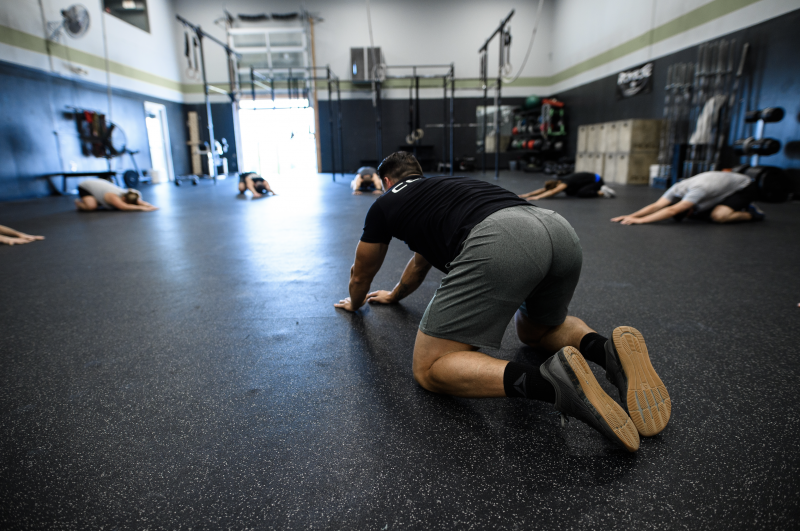
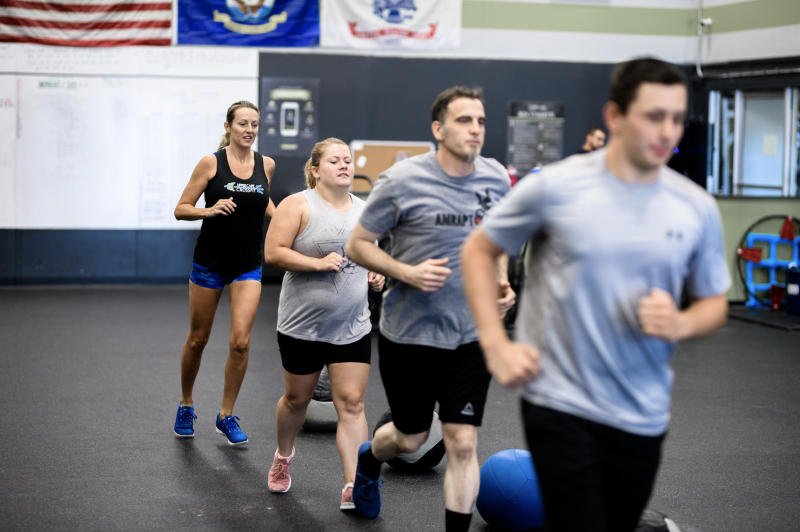
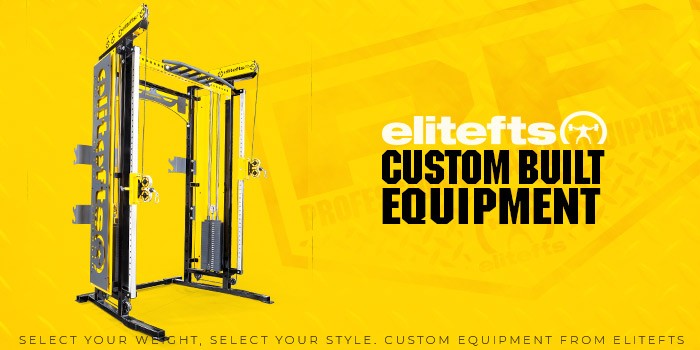
So, I find the easiest way to get the right point across is to specify they need to be training the UPPER back specifically. Like you mentioned, pull-aparts and face pulls, also posterior delt flyes, IYTs, etc.
A lot of people think of these as warm-up movements or "pre-hab," but I consider them to be an actual part of the training program, albiet with different progression patterns (not changing the resistance so much as playing with volume, rest intervals, frequency, variations).
I would recommend removing movements that exacerbate your current condition. The make-up of the programming varies quite a bit, so it may not always play out this way where we squat heavy and then perform higher-rep work the day after. If we are training the legs consecutive days more times than not it will be varied in terms of modality/volume.
Keep in mind that everyone responds differently and in a group setting, we don't have the same information available so the programming has to be tailored in a way that everyone can benefit, regards of what days people decide to show up.
Hope that helps!
We use this type of work in our warm-up as well as the actual training and is easy way to sneak some extra volume into peoples training.